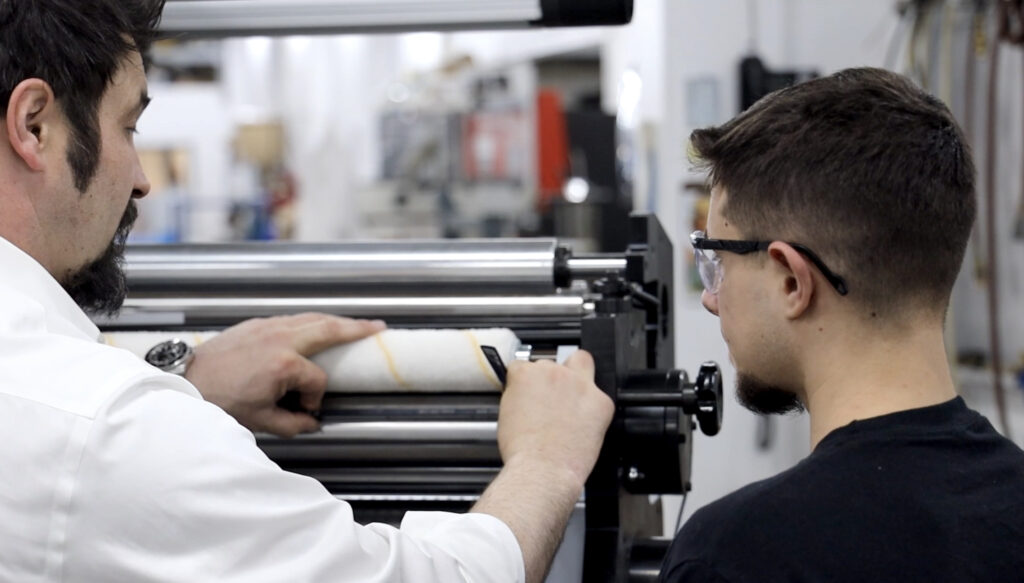Sustainability has become increasingly important to both businesses and consumers and can have a huge impact on a business’s bottom line. Just like any other industry, printing leaves a carbon footprint and affects the environment. It is important for businesses wanting to reduce their ecological footprint to look for more sustainable printing processes.
Sustainability in Printing
When it comes to the impact the printing industry has on the environment, we must look at the factors that cause a carbon footprint: waste, materials, and energy.
Printing Waste
Printing waste contributes a great deal to the industry’s overall impact on the environment. Better waste management is a significant piece of the sustainability mission, and identifying smarter ways to dispose of printer hardware and using recyclable materials is a great way to work toward sustainability.
Our landfills are overrun with waste that could easily be reduced with the proper processes in place for printing equipment and materials. Addressing production workflow and implementing vigorous automation can increase printing results and reduce the amount of waste caused by printing errors.
Printing Materials
One advantage the printing industry has in moving towards sustainability is the materials they use can easily be transitioned to recyclable and renewable products. Paper’s recyclability rate is 68%, so moving towards more sustainable materials can easily be achieved. Sustainable inks, coating, and toners can also be used in the printing industry to embrace sustainability across all printing processes.
Energy Consumption
A great deal of energy is used in the printing industry to power the machines and equipment that are used in facilities, as well as the power to transport goods to consumers. Using renewable energy sources can help the integration of increased workflow efficiency, establish and sustain smaller supply chains, and work towards getting away from non-renewable fossil fuels.
Tips for Increasing Sustainability in Printing
Be mindful of the vendors and suppliers your company uses and strive to work towards partnering with eco-friendly counterparts.
LED/UV – using an LED/UV drying method requires less energy compared to other drying processes, resulting in a more sustainable process. While the equipment does have a higher initial cost, over time the energy used can offset the investment through savings on your electric bill.
Use Recycled Substrates – you can choose to use recycled substrates from recycled film or paper. Choosing a carbon balance paper can reduce your environmental impact because the CO2 produced during the paper’s production is offset to net zero.
Flexo Printing Sustainability – Utilizing a flexo printing process can decrease your VOC emissions because solvent-based inks have a lower solvent level than inks used in gravure printing processes.
Uncoated Paper – Coated paper is difficult to recycle because it demands a costly specialized process that separates the paper from the coating. Due to the costs involved, it is generally not recycled. A downfall to uncoated paper is its inability to stand up to moisture, water, or grease, so it is important to be careful in its application.
Water-based Printing Process – Water-based ink is more eco-friendly than solvent-based ink and produces less VOCs, making it the more sustainable choice for printing operations.
Custom Web Finishing Equipment
Tamarack® Products understands the importance of maximizing workplace efficiency and sustainability in printing operations. We bring over 50 years of experience and are world-renowned as a leader in manufacturing web finishing and converting equipment such as inline film, patching, die cutting, and gluing equipment, RFID inlay insertion systems, and window patching equipment that is tailored to meet your unique business needs.
Tamarack® Products specializes in delivering scalable and flexible web finishing solutions with streamlined operations and processes. We offer custom-engineered window patching and labeling systems with various roll-fed materials for enhanced precision and quality applications. Contact us to learn how we can help improve your printing process and increase sustainability.





